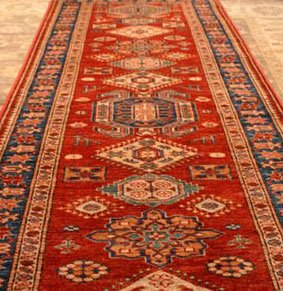Persian rugs are not just pieces of fabric that adorn floors; they are intricate works of art with a long and rich history. In Montclair, these beautiful rugs have a special place in many homes and galleries. This blog delves into the fascinating history of Persian rugs, their journey to Montclair, and why they continue to be cherished today.
The Origin of Persian Rugs
The history of Persian rugs dates back over 2,500 years, with ancient Persia, now modern-day Iran, being the heartland of this exquisite art form. The weavers of that era created rugs not just for utility but as a form of artistic and cultural expression.
These rugs were originally woven by nomadic tribes who needed durable floor coverings for their tents. Over time, the designs and techniques evolved, becoming more intricate and sophisticated. According to Catalina Rug, the earliest known Persian rug, the Pazyryk Carpet, dates back to the 5th century BC and showcases an impressive level of craftsmanship and detail.
During the Safavid Dynasty, from 1501 to 1736, Persian rug weaving reached new heights. The era is often referred to as the ‘Golden Age’ of Persian rugs. This period saw the creation of rugs with elaborate designs, often commissioned by royalty and nobility. The designs featured floral patterns, intricate medallions, and symbolic motifs that were rich in cultural significance.
The Persian rugs from this period were also known for their use of natural dyes made from plants, minerals, and insects. These natural dyes contributed to the vivid and lasting colors that Persian rugs are famous for. The tradition of using natural dyes is still maintained by many weavers today.
We are now by Appointment Only – Call Us at 510-339-2472 to schedule your viewing
The Craftsmanship Behind Persian Rugs
Making a Persian rug is no small feat. It involves a meticulous process of selecting the finest materials and weaving intricate patterns by hand. This craftsmanship has been passed down through generations, making each rug unique and full of character.
The process begins with the shearing of sheep to obtain the wool. This wool is then carefully washed, carded, and spun into yarn. The yarn is dyed using a variety of methods, including the traditional use of natural dyes. Once the yarn is ready, the weaving process can begin.
Weavers use either a vertical or horizontal loom, depending on their region and tradition. The design of the rug is often drawn on a grid pattern and is followed meticulously by the weavers. Each knot is tied individually, a process that can take months or even years to complete, depending on the size and complexity of the rug.
The craftsmanship doesn’t end with weaving. Once the rug is completed, it undergoes several stages of finishing, including washing, stretching, and trimming. These steps help to enhance the rug’s texture and ensure its durability.
Journey of Persian Rugs to Montclair
The journey of Persian rugs to Montclair began with their global popularity in the 19th and 20th centuries. Collectors and immigrants brought these rugs to different parts of the world, including Montclair, where they found a new audience that appreciated their beauty and craftsmanship.
Montclair Rug Gallery, established in 1987, has played a significant role in popularizing Persian rugs in the area. The Gallery offers a vast selection of fine handwoven rugs, each meticulously chosen for its beauty and craftsmanship. They provide expert advice to help customers find the perfect rug for their homes.
Persian rugs became a symbol of luxury and culture, often adorning the homes of the affluent and the cultured. They were not just floor coverings but also conversation pieces, each with its own story and history.
Why Persian Rugs Are Cherished in Montclair
In Montclair, Persian rugs are cherished not just for their aesthetic appeal but also for the history and stories they carry. They add a touch of elegance to homes and serve as conversation starters thanks to their rich backgrounds.
The intricate patterns and vibrant colors of Persian rugs can transform a space, adding warmth and character. Each rug is unique, reflecting the individual skill and creativity of its weaver.
Montclair residents also appreciate the investment value of these rugs. A well-maintained Persian rug can appreciate over time, making it not just a beautiful addition to the home but also a valuable asset.
How to Care for Your Persian Rug
Owning a Persian rug comes with the responsibility of caring for it properly. Simple tips like regular vacuuming and avoiding direct sunlight can go a long way in preserving the rug’s beauty and longevity.
Montclair Rug Gallery offers services such as rug cleaning and restoration, ensuring that your rug remains in excellent condition. They recommend rotating the rug periodically to ensure even wear and having it professionally cleaned every few years.
Using a rug pad can also help extend the life of your Persian rug by providing cushioning and reducing friction. Additionally, avoid placing heavy furniture on the rug, as this can cause permanent indentations in the pile.
A Timeless Art in Montclair
From ancient Persia to the cozy homes of Montclair, Persian rugs have traveled a long way, bringing with them a piece of history and a dash of exquisite artistry. Whether you’re a seasoned collector or a curious newcomer, there’s always something new to learn and appreciate about these timeless treasures.
We are now by Appointment Only – Call Us at 510-339-2472 to schedule your viewing

